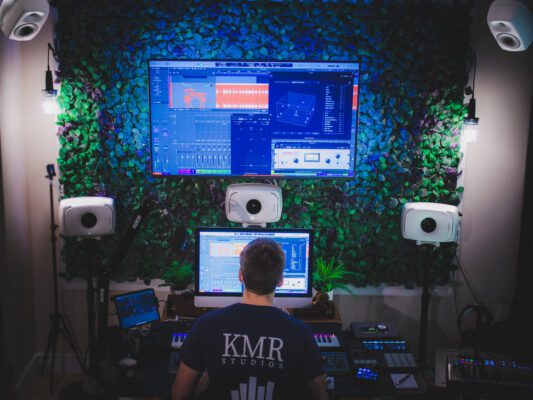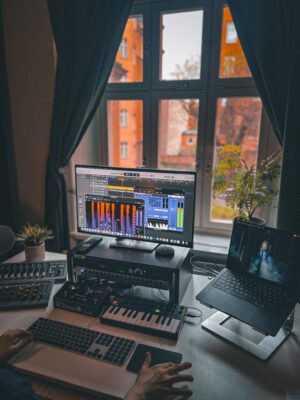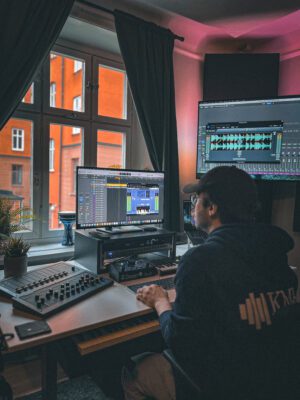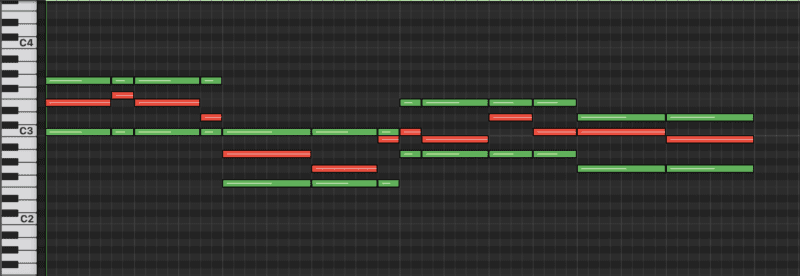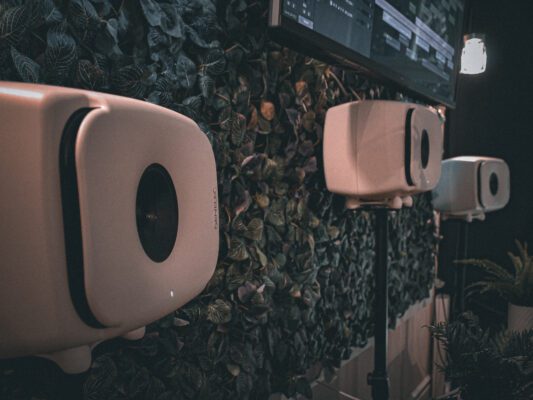Take Your Songs to New Heights
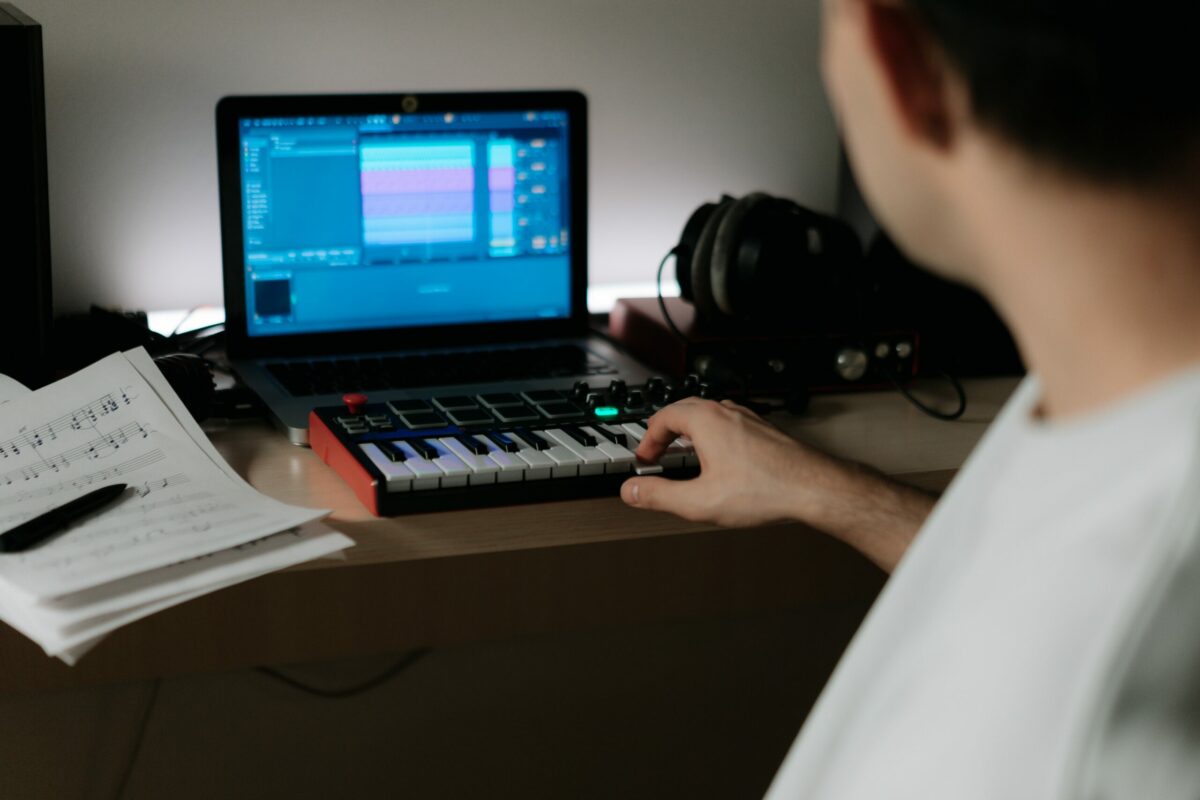
It may seem easy to write songs at first glance, but upon closer examination, you quickly realize that many pieces need to fall into place. In other words, it’s easy to get stuck. This guide is aimed at you who are accustomed to writing your own songs but feel the need to develop your songwriting skills further. If you’re just starting to write your first song, our guide on how to write song lyrics might be more suitable for you.
Develop Your Songwriting with 4 Simple Tips
Do you also feel that your songs are missing something? People often talk about “that little something extra” without really defining what it is, but breaking down a song’s components can make it easier to understand. The following four tips aim to get you thinking about your strengths and weaknesses as a songwriter so that you know what areas to focus on more. Are your songs too similar? Too long? Difficult to remember? Lacking contrast?
1. Use Melodic Motifs
A melodic motif is a recurring melody that makes us recognize the song, remember it, and want to sing along. Different parts of a song, such as verses and choruses, can have different melodic motifs. In commercial music, it’s common for a motif to be repeated many times, although that’s not a requirement for all music. However, a song should have some kind of pattern for us to identify it, as otherwise, we risk forgetting it right after hearing it.
Remember that short melodies are usually easier to remember than long melodies that undergo many changes. Also, make use of “rest space,” which means pauses between notes and phrases where the listener can rest. All of these elements don’t have to be present in a song for it to be good, but they serve as guidelines for songwriting. Consider the motifs you can find in your songs.
2. Create Melodic Contrast
When you have a clear motif in a verse, it’s easier to do something completely different in the chorus to create contrast. There are five different ways to create contrast using melodies:
- Phrase length
- Note length
- Pitch
- Position
- Form
Phrase length refers to the length of your melodic motifs. For example, you can contrast a verse that has long melodic phrases with a bridge that has short phrases with more rest space, which, in turn, you can contrast with a chorus with long phrases. This is very common in commercial music. You can also vary note length, such as short notes in a verse contrasting with long notes in a chorus, or pitch, such as low notes in the verse and higher notes in the chorus.
You can also use not position as a way to create contrast. This has to do with which beat the phrases start on, such as the verse starting on beat one while the chorus starts on beat four. If this way of thinking feels foreign to you, consider when you start playing and when you start singing. Does the singing come before or after you strike the first chord? Or do the vocals and chords come together? Finally, you can vary the form of your melodies, such as going down and then up in a verse but the opposite in a chorus.
3. Vary Tempo and Chords
Do all your songs have roughly the same tempo? It’s easy to fall into that trap! A great way to start to develop your songwriting is by challenging yourself with writing the same song in several different tempos. Start with just a song title and experiment. Something that initially felt like an obvious ballad might turn out to be better suited as an energetic rock anthem! Here, you should also consider your choice of instruments. Do you always use the same instruments? Do you always play them the same way? Dare to step outside your comfort zone.
Chords don’t have to be complex; simple chords that are repeated often suffice. You can use few chords in one song section to make it easier to create contrast when the chords change in the next section. Also, consider when you change chords. Songwriters often get stuck in changing chords every measure, which can make the songs monotonous. Try changing chords more frequently or less often. Create contrast by changing chords at different frequencies in different parts of the song.
4. Create Patterns and Contrasts in the Lyrics
Even when it comes to lyrics, it’s important to have patterns, such as a full sentence consisting of two lines or each line starting with a verb. You can make the lyrics easier to grasp by establishing a clear linguistic structure that is repeated. Also, vary the structure between different parts of the song to create contrast. Try reading it aloud to see if it flows smoothly. Don’t skip the task of filling in small words for your listeners; write exactly as you mean.
Try to use all your senses when writing lyrics and describe visual impressions, tastes, smells, sounds, and movements. Make sure to create contrast in the content as well, such as delivering the main message in the chorus with impactful words that summarize a feeling, while the verses delve into the message in detail and support the credibility of the chorus.
Good luck with developing your songwriting!
We hope this guide was useful for you if you want to enhance your songwriting and take your songs to new heights. If you have any more questions, feel free to contact us! You can also read more about how to format song lyrics.
Guides
What is a clipper?
Have you started out in the world of mixing and mastering and just came across [...]
5 Clippers taking your mix to new heights
Are you not sure what Clipper to use when mixing and mastering your music? We [...]
Mastering Vocal Harmonies
Read more about what strategies you could use to learn more about, and eventually master, [...]
Export master files from Atmos projects in Logic Pro
This article gives you detailed information on how to export master files from Logic Pro [...]
Contact Us

CONTACT US
OUR PORTFOLIO
Over the past few years, KMR Studios has released hundreds of songs by a wide range of artists. To make it easier for you to find what you’re looking for, we’ve organized the music into various playlists. Click the link below to explore our music by format (stereo or Dolby Atmos) or genre.
Portfolio
 Svenska
Svenska

